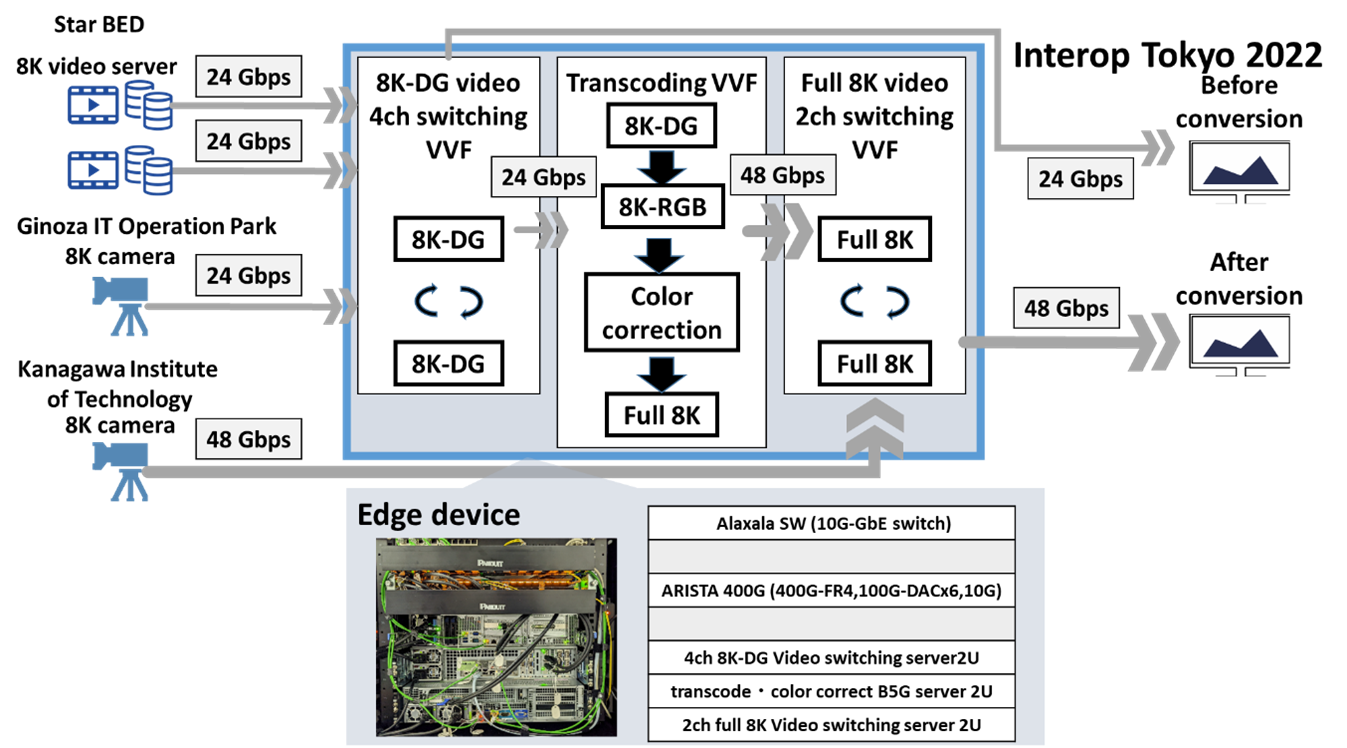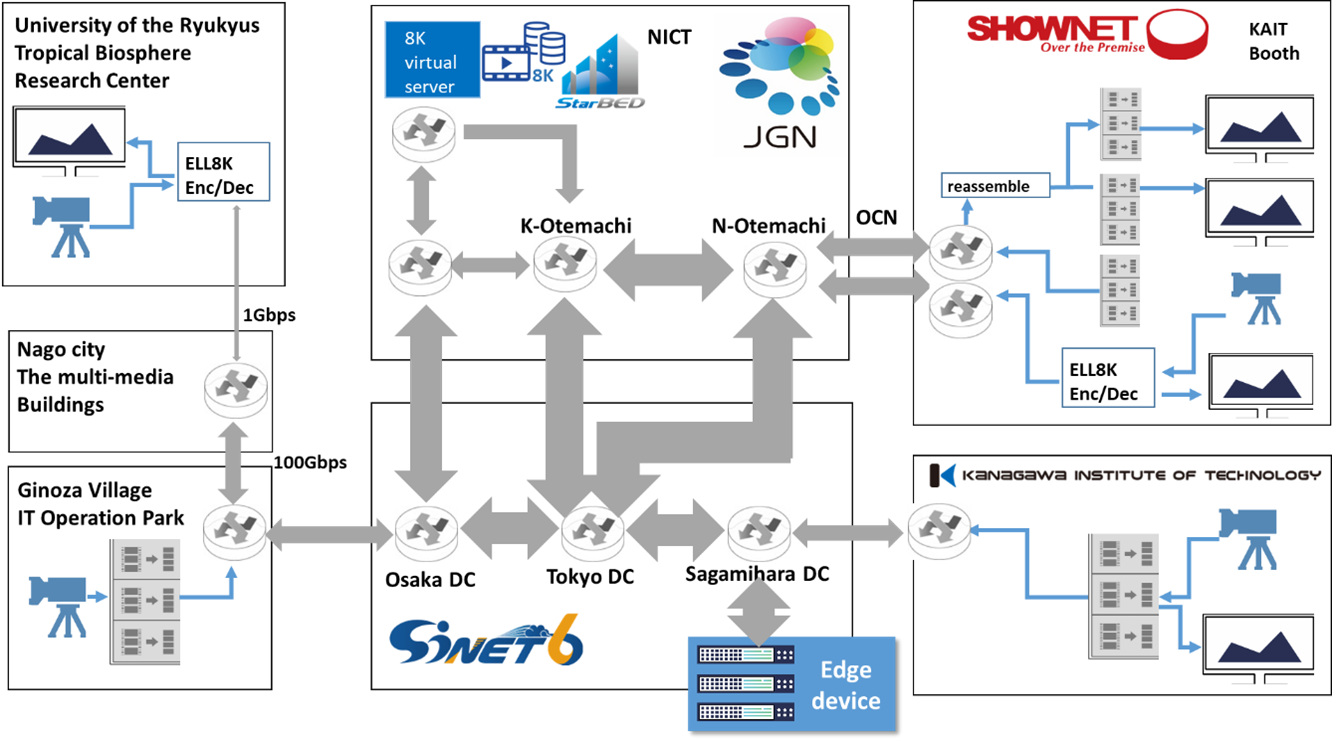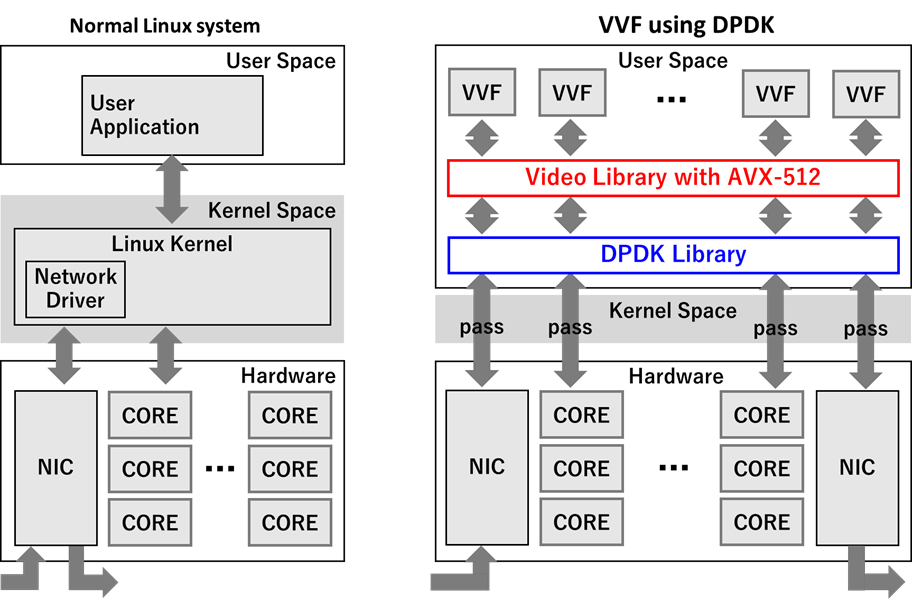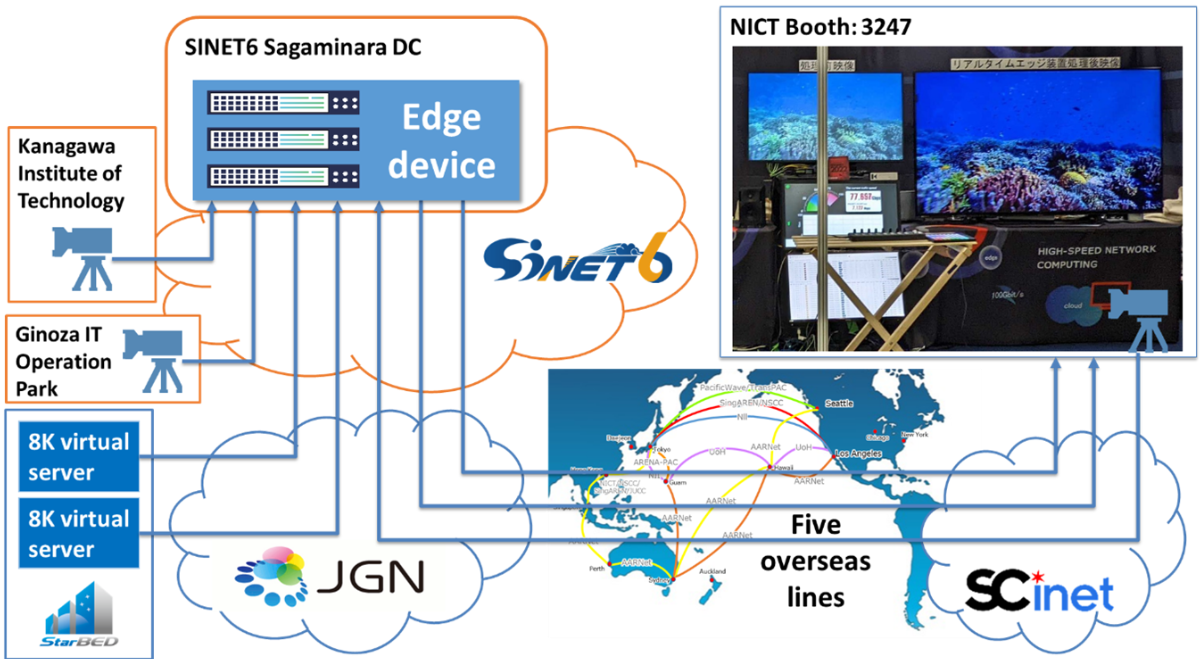
The Kanagawa Institute of Technology (KAIT) will conduct an experiment to edit and distribute 8K uncompressed video in real-time using edge devices supporting 400 Gbps installed in the network at the National Institute of Information and Communications Technology (NICT) booth (#3247) at SC22, Nov. 14-17 at the Kay Bailey Hutchison Convention Center in Dallas.
KAIT previously conducted the demo at Interop Tokyo 2022 in June 2022, in collaboration with Daido University, University of the Ryukyus, and Michal Communications; the NICT demonstration at SC22 is the first international experiment.
Video format conversion, which requires high-speed processing, is achieved by chaining software for video processing functions within the edge device. When the producer requests video switching by pushing the button, the system instantly switches to the format-converted video, and by operating the color adjustment knob, it is possible to adjust the color and create and distribute video with natural connections.
Kanagawa Institute of Technology, in collaboration with Daido University, University of the Ryukyus, and Miharu Communications Inc., is developing a practical technology for high-speed network computing, which includes a terminal, edge device, and cloud computing. This enables real-time editing and distribution of 8K ultra-high-definition (UHD) videos without having to use a compression tool and at the same time sacrificing UHD streaming video quality.
When the academic network operated by the National Institute of Informatics (NII) migrated to SINET6 in April 2022, it built an edge device connected to a high-speed network of 400 Gbps in a rack at the Sagamihara DC in Kanagawa for its research project.
In June at Interop Tokyo 2022, a network technology exhibition held in Makuhari, Japan, KAIT demonstrated its virtualized video-handling function (VVF) technology by processing uncompressed 8K real-time videos using an edge device configured in the Sagamihara DC mentioned above. The VVF enables the edge computer to execute a single real-time video process, such as video transcoding, without degradation. To adopt multiple video processes, multiple VVFs can be chained.

The test proved the successful switching of several 8K video sources freely via a network using the edge device, and color conversion was performed and distributed. Specifically, it instantly switches between 8K uncompressed videos in different formats (8K dual green: 8K-DG 24Gbps, 8K full resolution 48Gbps, etc.) from multiple locations, including cameras in the booth, an 8K camera at KAIT, an 8K camera at Ginoza, Okinawa, and two 8K stored video materials in StarBED in Hokuriku. At the same time, the system provides format conversion of the switched 8K video without degradation and performs color correction (color correction) in real-time.
The professional video industry's #1 source for news, trends and product and tech information. Sign up below.

VVFs have been developed using the data plane development kit (DPDK) in a software-based framework for edge devices that require high-speed processing. In addition, AVX-512, Intel's single instruction, multiple data parallel processing model, can be used for transcoding and color conversion.

By chaining multiple VVFs located at the edge of the network and by performing video processing at high speeds, the local video editing base that was previously essentially becomes unnecessary. We aim to enable 8K video editing and distribution by connecting a computer directly to the network.
In the SC22 venue, KAIT will show an uncompressed 8K live video stream from an edge device in Japan, configured in the SINET6 Sagamihara data center of the NII. The video is processed by chained VVFs in the edge system in Japan before KAIT shows it in the venue.

